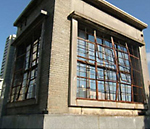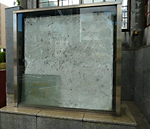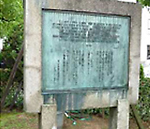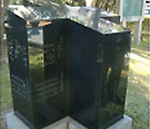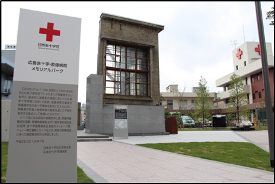| January 1956 | Groundbreaking ceremony held (15th), attended by Princess Takamatsu |
|---|---|
| September 1956 | Completion ceremony held (11th), attended by Princess Chichibu |
| September 1956 | Japanese Red Cross Society – Hiroshima Atomic-bomb Survivors Hospital established on premises of Hiroshima Red Cross Hospital (20th) No. of beds: 120, Departments: Internal Medicine, Surgery, Radiation Treatment |
| November 1960 | Nuclear Radiation Effects Countermeasure Research Institute established. |
| April 1961 | Orthopaedic Surgery Department established. No. of beds: 120, Departments: Internal Medicine, Surgery, Radiation Treatment, Orthopaedic Surgery |
| Completion ceremony for the Malignant Neoplasms Diagnosis and Treatment Clinic held (4th) | |
| March 1968 | Autopsy Room and Specimen Room established |
| June 1968 | Annex hospital ward completed (4th) (additional 50 beds for a total of 170 beds) |
| June 1969 | Betatron Radiation Room established |
| September 1969 | Testing ward expanded |
| May 1977 | New building opened (120 beds transferred from main building) |
| August 1986 | Main building closing ceremony (29th) |
| October 1986 | Deconstruction began on the Atomic-bomb Survivors Hospital Main Building, Research Institute, and Malignant Neoplasms Diagnosis and Treatment Clinic for renovations |
| March 1988 | Construction on new ward (Building No. 6) completed and completion ceremony held (29th) |
| April 1988 | Hiroshima Red Cross Hospital and Japanese Red Cross Society – Hiroshima Atomic-bomb Survivors Hospital merged (stage one of renovation work completed) New journey embarked on as the Hiroshima Red Cross Hospital & Atomic-bomb Survivors Hospital No. of beds: 594 |
The Hiroshima Red Cross Hospital & Atomic-bomb Survivors Hospital, Atomic-bomb Survivors Medical Care Department is involved in the following kinds of projects.
HICARE began as a project of Hiroshima Prefecture and Hiroshima City in FY 1991, with the support from the national government and related organizations such as Medical Association(s). This organization aims to create the means to effectively utilize the experience of treatment for atomic-bomb survivors and the results of surveys and research on radiation sickness accumulated here in Hiroshima in the treatment for victims of radiation exposure across the globe, thus allowing Hiroshima to contribute to the world and promoting international cooperation. Our Hospital not only participates in the Council but also accepts medical trainees visiting Japan.
Our Hospital participates and cooperates in relief for overseas atomic bomb survivors (health check-ups in North America and South America) which had been implemented under the leadership of Hiroshima Prefectural Medical Association and Hiroshima Prefecture. These projects were updated in FY 2002 into the project for assistance for traveling to Japan for overseas atomic-bomb survivors performed by the Ministry of Health, Labour and Welfare, and our Hospital has continued to cooperate in the project. We are also currently accepting patients from South Korea.
We also provide consultations regarding the medical treatment, lifestyle, and welfare of atomic-bomb survivors and accept visitors.
At 8:15 AM on August 6th, our reinforced-concrete hospital building fell into a dismal state. The windows had been blown away in a powerful blast and the room interiors were abjectly destroyed, leaving only the exterior walls. In addition to the approximately 250 military patients at the Hospital, many doctors, nurses, nursing students, and others were injured and some were killed, creating a scene of chaos.
Also, as most of the medical facilities in the city has stopped functioning, the Hospital was flooded with injured people. The doctors and nurses who were still able to work gathered in front of the main entrance and engaged in first aid.
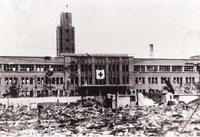
| Classification | Total numbers | Dead | Injured | Missing |
|---|---|---|---|---|
| Doctors | 27 | 5 | 250 | None |
| Nurses | 34 | 3 | ||
| Nursing students | 408 | 22 | ||
| Pharmacists | 6 | 3 | ||
| Employees | 79 | 18 | ||
| Total | 554 | 51 | ||
| Inpatients | Approx.250 | 5 | 109 |
e main building / central hospital ward (post-war: Building No. 1), and north hospital ward (post-war: Building No. 2) were severely damaged.
The isolation hospital ward, nursing students dormitory, cleansing station, waste incinerator, chapel, autopsy room, guard room, animal house, garage, attached residences, pump room, laundry room, workroom, storage area, and connecting corridor were completely burned down.
Three off-premises nurse dormitories (including two wards for sub-dorms), as well as four wards of off-premises staff housing were completely burned down.
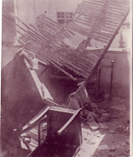
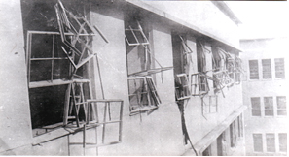
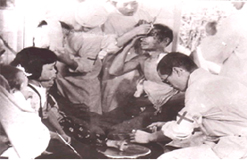
On the 7th and 8th, relief squads from Red Cross Yamaguchi Hospital, Red Cross Okayama Hospital, and Red Cross Tottori Hospital arrived, supporting the medical treatment efforts of the Hiroshima Red Cross Hospital. However, the Hospital itself had suffered enormous human and physical damage, and several thousands of injured people had flooded it, despite it no longer functioning as a place for medical care, all at once. All the Hospital could provide was relief activities using the tiny amount of medical machines and medicine remaining. Since all the medical agencies in the city had been destroyed, medicine could also not be resupplied, meaning even simply first-aid was difficult. The staff worked tirelessly around-the-clock to provide care.
Memorial Park is located to the south across the road from our Hospital. The park was established as a base for passing on the Red Cross spirit of staff members and nursing students, who devoted themselves to rescuing the victims even though many of them died while performing their duties at the time of atomic bombing, to posterity. The other purpose of the park is for seeking peace through consolation for the spirits of those who died in the line of duty and providing witness for the atomic bomb experiences.
Many people, including our staff, attend the memorial ceremony held on August 6th each year.
The Memorial Park is always open. Please feel free to visit and view the Park anytime.
